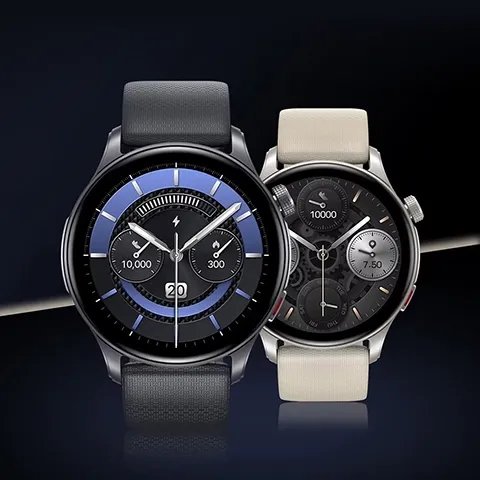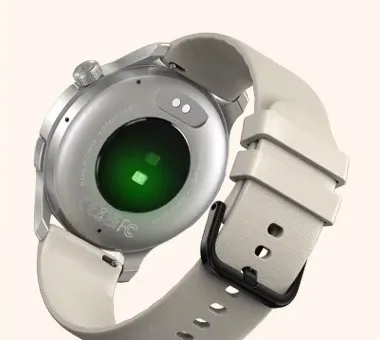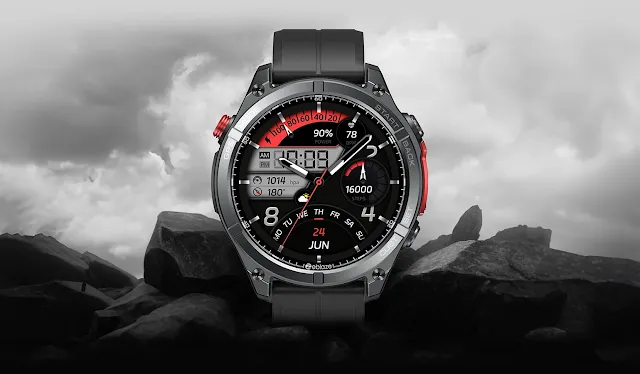Table of Contents
Introduction
Apple has refreshed the Vision Pro headset with a substantial internal spec bump and comfort improvements — often referred to in coverage as the Vision Pro 2 (the M5 upgrade). This update keeps the same core design and visionOS experience but adds a new M5 system-on-chip, a more comfortable Dual Knit Band accessory, display performance improvements (higher refresh rate and more rendered pixels), and modest battery gains. Apple positions this update as a refinement that accelerates spatial computing experiences while keeping the original Vision Pro price point.
What’s new in Vision Pro 2 (M5)
The headline upgrades for the refreshed Vision Pro are:
- M5 chip: Apple’s new M5 (3nm-class) silicon replaces the M2 in the headset, offering more CPU/GPU cores and a beefed-up Neural Engine for faster on-device AI, ray-tracing and richer spatial effects. This allows higher refresh rates and smoother graphics in visionOS apps.
- Higher refresh rate & more pixels: The M5 model can render ~10% more pixels on the micro-OLED panels and supports up to 120Hz refresh (vs ~100Hz before) — delivering a noticeably crisper and more fluid experience in motion.
- Dual Knit Band: a redesigned strap accessory that blends the comfort of previous bands with better adjustability and a single-fit dial for top/bottom tension control; Apple sells it separately as an optional comfort accessory.
- Battery & charging improvements: a slightly larger or more efficient battery pack plus a stronger dynamic power adapter (40W/60W range) gives longer video playback — about 3 hours of video playback in some tests, up from ~2.5 hours previously.
- visionOS 26 and Apple Immersive content: the refresh ships alongside visionOS 26 with performance-focused features and new spatial content (movies, shows, live NBA content, Persona refinements).
- Improved on-device AI speed: Persona rendering, spatial photo processing and AI features in visionOS are reported to be up to ~50% faster on the M5 in some Apple/Tom’s Guide coverage.
In short: the M5 Vision Pro is an evolutionary but directionally important update — faster silicon that enables higher-fidelity visuals, smoother frame rates and a modest bump to the battery and comfort so the device feels more polished for longer sessions.
Key specs & hardware details (practical)
Below are the practical, user-focused specs and hardware notes for the M5 Vision Pro (Apple’s refreshed Vision Pro model):
| Chipset | Apple M5 (10-core CPU, 10-core GPU variant reported; 16-core Neural Engine in reporting). |
|---|---|
| Displays | Dual micro-OLED panels — M5 can render ~10% more pixels and support up to 120Hz refresh. |
| Cameras & sensors | Same camera/sensor array as original: multiple world-facing cameras, LiDAR, eye-tracking and R1 coprocessor remain unchanged. |
| Audio | Integrated spatial audio system similar to original Vision Pro (multiple speakers, beamforming), with small tweaks to performance reported. |
| Battery & adapter | Improved battery life (approx. 2.5–3 hours depending on workload) and a 40W dynamic adapter included (some reports mention up to 60W capability). |
| Comfort / bands | New Dual Knit Band optional accessory (sold separately) with improved adjustability & comfort. Compatible with M2 model too. |
| OS | visionOS 26 with new spatial features and Apple Immersive content support. |
visionOS 26 — software improvements that matter
The hardware upgrades are only half the story — visionOS 26 brings content and system optimizations that benefit greatly from the M5 silicon. Apple emphasizes:
- Faster Persona & AR rendering: Personas (lifelike avatars) and spatial UI elements render more smoothly and responsively with the extra GPU horsepower. This matters for meetings, social experiences and streaming.
- Apple Immersive content: more spatial series and films, and partnerships including select live sports content integrated into the Apple TV app for spatial viewing.
- Improved multitasking & windowing: Higher frame rates and faster app swaps make productivity workflows (multiple floating apps / large virtual displays) feel less constrained.
Practically, visionOS 26 + M5 feels more like a “desktop-class” spatial environment rather than a phone-scaled VR layer — apps load faster, UI interactions are smoother, and more ambitious visual effects are feasible without stuttering.
Real-world use cases — productivity, media & gaming
Productivity
The Vision Pro 2 is strongest when used as an ultra-portable multi-monitor setup: multiple large, high-resolution virtual displays, full-sized document editing in landscape, and conferencing with Persona or itself as a more private workspace. The M5 makes heavier multitasking (many windows, live video, layers of spatial UI) more feasible without frame drops. This is where Vision Pro begins to justify itself for some creators and knowledge workers.
Media & cinema
Watching movies in spatial environments (Apple Immersive) and playing 3D content is improved by the higher refresh rate and extra pixel throughput — colors and clarity feel better, and longer battery gives you more watch time per charge. For viewers who want an immersive personal cinema, Vision Pro 2 is a notable step up.
Gaming & 3D apps
The M5 brings a meaningful uplift in GPU capability for ray-traced lighting and higher detail in 3D titles. While Vision Pro is not positioned as a pure gaming console, the platform’s laptop-class silicon and the improved frame rate make certain premium VR/AR games more attractive and technically sophisticated. Expect developers to push richer graphics in new releases targeted at the M5 model.
Vision Pro M5 vs M2 — should you upgrade?
Quick summary:
- Performance: M5 = noticeably faster (GPU & Neural Engine) — better for heavy spatial workflows and advanced rendering.
- Display & fluidity: M5 supports 120Hz and renders ~10% more pixels — meaning smoother motion and slightly sharper visuals.
- Battery: modest gains — about 30 minutes more video playback in typical tests (3 hours vs ~2.5 hours). Useful but not game-changing.
- Comfort: Dual Knit Band addresses the top complaint from early adopters — if you struggle with fit the new band and dial are meaningful.
Verdict: If you already own the M2 Vision Pro and only use it for light content consumption, the upgrade might feel incremental. But if you rely on the Vision Pro for multi-app productivity, pro visual workflows, or want the smoothest possible spatial frame rates, the M5 refresh is worth considering. Many reviewers frame it as “worth it” for serious users and creators, less so for casual experimenters.
Apps, content & Apple Immersive
Apple continues to push the Vision Pro as a content and productivity platform. Key content considerations:
- Apple TV & Immersive Library: spatial films, series and curated immersive content are a growing part of the experience. Apple highlights cinematic spatial presentations and partnered live events (NBA).
- Productivity apps: Microsoft Office, professional creative apps, and pro-grade utilities are increasingly optimized for visionOS — M5 improves the responsiveness of these heavier apps.
- Social & meetings: Persona improvements (more realistic avatars) and faster rendering make virtual meetings feel less artificial and more presence-oriented.
- Games & 3D experiences: Expect better-quality ports and native titles that leverage ray tracing and higher refresh rates on M5 hardware.
Accessories & ecosystem (Logitech Muse and more)
As Vision Pro grows, third parties are shipping more specialized accessories. Two notable accessory trends:
- Comfort bands & carrying cases: Apple’s Dual Knit Band addresses comfort; expect more third-party band designs tuned for extended wear sessions.
- Precision input devices: Logitech has introduced a stylus called the Muse that behaves like an Apple-Pencil-style controller for Vision Pro — pressure-sensitive, haptic-enabled and designed for drawing/3D editing inside visionOS apps. This improves creative workflows and adds a natural input modality for design work.
Other accessories to watch for: higher-wattage power adapters, soft carry cases, clip-on shade visors for outdoor use, and pro-grade audio attachments for creators who need absolute fidelity and isolation.
Battery, charging & practical endurance
The Vision Pro has always relied on an external battery pack for untethered sessions. The M5 update brings a stronger power adapter and small battery gains:
- Apple advertises around 2.5–3 hours of video playback on the M5 model depending on content and settings, up from ~2.5 hours on the first M2 model in many real-world tests. This is helpful for longer movie sessions but still means the device is best for dedicated use rather than all-day wear.
- Apple ships a more powerful dynamic adapter (40W and reports reference up to 60W capability), which reduces recharge times and helps support higher peak power draws during intense GPU use.
Practical takeaway: battery improvements remove some friction (longer movies, longer work sessions) but Vision Pro remains a session-driven device that requires planning for multi-hour days.
Price, availability & regional notes
Apple keeps the Vision Pro’s original premium positioning: the refreshed M5 model remains at the same flagship price point (Apple’s U.S. price retains the earlier $3,499 tag) and is available from October 22, 2025 (preorders live earlier). Availability may expand regionally over time, but expect limited initial stock and demo-by-appointment in Apple Stores as Apple continues to show the device by scheduled demos.
If you’re outside initial launch markets, plan for potential regional price differences, import costs, or delayed shipments.
Pros & Cons — quick summary
Pros
- M5 silicon delivers a meaningful performance and visual upgrade for heavy spatial workflows.
- Smoother visuals via 120Hz and ~10% more rendered pixels improve immersion.
- Dual Knit Band addresses one of the loudest early complaints — comfort & fit.
- visionOS 26 + Apple Immersive content shows Apple’s continued content investment.
Cons
- Price remains very high at $3,499 — still a niche purchase for many consumers and enterprises.
- Battery gains are modest; the device still requires planning for multi-hour days.
- For casual users the upgrade from M2 may feel incremental unless you rely on heavier apps.
Who should buy Vision Pro 2 (M5)?
- Professional creators & spatial app power users: if you edit 3D, do spatial design, or use Vision Pro as a portable production studio, M5 is a sound upgrade.
- Early enterprise adopters: businesses using Vision Pro for training, design reviews, or immersive collaboration will benefit from extra performance and comfort.
- Immersive media consumers: if you consider Vision Pro your dedicated cinema or spatial-content device, the M5 model’s visual and battery boosts are meaningful.
- Not for casual buyers — if you want a cheap VR toy or are trying XR for the first time, cheaper standalone headsets deliver many experiences at far lower cost.
Buying checklist — 12 practical considerations
- Book an in-store demo if possible — Vision Pro is an experiential purchase.
- Decide whether you need the extra M5 horsepower or can live with the M2 at lower resale costs.
- Plan for battery management — carry the power pack or buy a high-capacity spare.
- Try the Dual Knit Band fit in-store if comfort for long sessions matters (it’s sold separately).
- Check regional App availability for visionOS apps you need (some apps launch regionally).
- Confirm warranty, AppleCare options and enterprise support if buying for business.
- Consider Logitech Muse (or other styluses) if you plan creative drawing or 3D editing.
- Expect limited initial stock and demo-by-appointment windows. Plan preorders if early access
- Compare any bundled offers from carriers or enterprise resellers.
- Factor accessory purchases (band, stylus, case, spare battery) into final budget.
- Watch independent reviews for thermal & battery real-world numbers before a full purchase decision.
- Plan how Vision Pro will fit into your daily workflows — it excels at focused sessions rather than continuous wear.



































